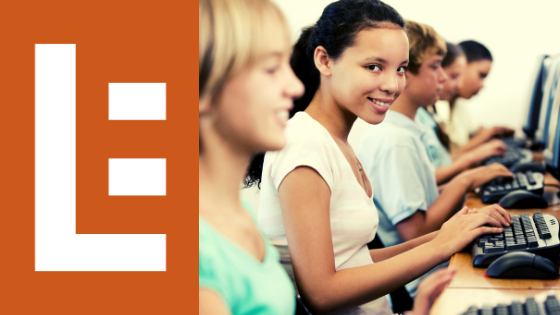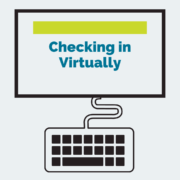Blended Learning in the Classroom Pt. I
Blended learning is a new initiative in MCPS—many schools are devoting hours of professional development training, numerous staff meetings, and other resources to school educators on all things “BL.” In essence, blended learning is an educational approach that blends student choice, self-paced coursework, reteaching opportunities, and small, differentiated instruction with the use of online/digital tools.
A blended learning lesson might look something like this:
- Students enter and complete a whole group warm-up in which they write down the definition of subjectivity and objectivity from the board.
- The point of the whole-group, traditional start of the lesson is to provide background knowledge or introduce critical elements so that all students begin at the same point, with the same understanding of the content or topic.
- When implementing blended learning, the whole-group aspect can last longer than a warm-up, but should still leave time for students to complete at least one other rotation.
- The whole-group or lesson opener can also utilize technology if necessary. For instance, the teacher might play a segment of a commercial and ask students to bullet point subjective and objective methods on an index card. Then, the whole group might discuss observations briefly before breaking into rotations.
- After the whole-group instruction, the teacher will then review the different rotations. Each rotation will involve a separate activity or list of options of activities. Each station will also involve different materials, skills, and varying levels of independence. While the station activities will look different, the objective for each rotation will be connected to the topic or content introduced during the whole-group warm-up.
- A critical aspect of blended learning is the use of technology. Therefore, one of the rotations must involve some digital aspect. This can mean that students might access various materials via Google Classroom; or perhaps they will work from a collaborative, shared document while annotating copies of texts.
- The use of technology also allows students to work at their own pace and review, reread, or rewatch as necessary. If one station includes audio or video, such as podcasts, teacher-created youtube videos, or step-by-step instruction using Screencastify, students are able to pause, rewind, or fast forward depending on their own needs.
- Teachers can also, with a little planning, use technology to ensure that students are accessing materials to match their own specific ability levels. Websites like NewsELA allow teachers to select text sets with varying Lexile levels and digitally push them out to appropriate groups of students. This way, differentiation can be ensured for all students—the high flyers and the struggling readers.
- In addition to the digital/technology rotation and the optional collaborative rotation, the third rotation is intended for small-group, teacher-led instruction. Teachers should often be advised to group students by ability level. Then begin working with the lowest group first. That way, the struggling students receive teacher-led, small-group instruction and discourse about the concept or topic before going off on their own in the other two rotations to work more independently.






